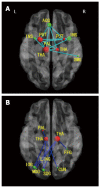Multimodality magnetic resonance imaging in hepatic encephalopathy: an update
- PMID: 25170210
- PMCID: PMC4145764
- DOI: 10.3748/wjg.v20.i32.11262
Multimodality magnetic resonance imaging in hepatic encephalopathy: an update
Abstract
Hepatic encephalopathy (HE) is a neuropsychiatric complication of cirrhosis or acute liver failure. Currently, HE is regarded as a continuous cognitive impairment ranging from the mildest stage, minimal HE to overt HE. Hyperammonaemia and neuroinflammation are two main underlying factors which contribute to the neurological alterations in HE. Both structural and functional impairments are found in the white mater and grey mater involved in HE. Although the investigations into HE pathophysiological mechanism are enormous, the exact pathophysiological causes underlying HE remain controversial. Multimodality magnetic resonance imaging (MRI) plays an important role in helping to understand the pathological process of HE. This paper reviews the up-to-date multimodality MRI methods and predominant findings in HE patients with a highlight of the increasingly important role of blood oxygen level dependent functional MRI.
Keywords: Blood oxygenation level dependent functional magnetic resonance imaging; Default-mode network; Diffusion weighted imaging; Hepatic encephalopathy; Magnetic resonance imaging; Magnetic resonance spectroscopy.
Figures




References
-
- Garcia-Martinez R, Rovira A, Alonso J, Jacas C, Simón-Talero M, Chavarria L, Vargas V, Córdoba J. Hepatic encephalopathy is associated with posttransplant cognitive function and brain volume. Liver Transpl. 2011;17:38–46. - PubMed
-
- Mattarozzi K, Cretella L, Guarino M, Stracciari A. Minimal hepatic encephalopathy: follow-up 10 years after successful liver transplantation. Transplantation. 2012;93:639–643. - PubMed
Publication types
MeSH terms
Substances
LinkOut - more resources
Full Text Sources
Other Literature Sources
Medical

